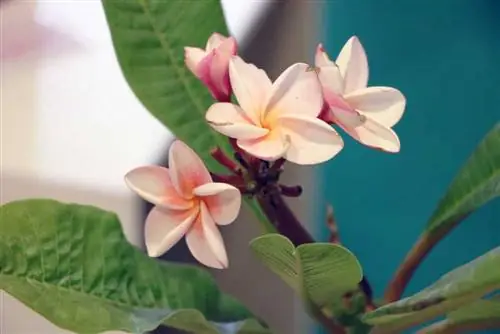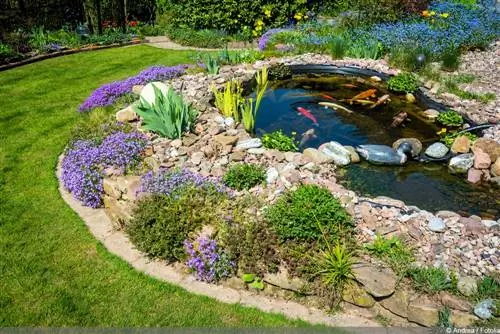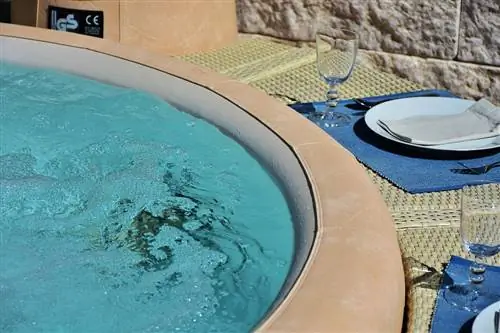- Author admin [email protected].
- Public 2023-12-17 03:39.
- Last modified 2025-06-01 06:48.
Plumeria, also known as the temple tree, pagoda tree or West Indian jasmine, is a succulent and dogpoison plant. While it is symbolic in its natural homeland, it is particularly popular in this country because of its wonderfully beautiful and wonderfully fragrant flowers. Due to its origin, it is not hardy in our latitudes. The frangipani is also a little more demanding when it comes to soil conditions and watering and fertilizing behavior. Accordingly, there are a few things to consider when it comes to both the dosage and the composition of the fertilizer.
Correct watering behavior
When watering, you should first make sure that the temple tree is neither too wet nor too dry. This charming plant doesn't like wet feet at all. Too much moisture can quickly lead to rot and thus death. It's better to water a little less than too much and ensure optimal drainage in the planter.
- Watere regularly throughout the summer
- If necessary, water up to twice a day on hot days
- Higher water requirement in summer due to the large leaf mass
- This plant evaporates a lot of water
- Do not water during midday or in the blazing midday sun
- Sensitive roots could otherwise be damaged
- Better to provide water in the morning or evening
- Let the soil dry between each watering
- Always remove water from planters or saucers shortly after watering
- Short-term dryness is tolerated without any problems
- For high humidity, spray leaves regularly with water
- Best in the morning or evening hours
Sometimes, especially in winter, the trunk of the frangipani, especially in younger specimens, can become a little wrinkled, comparable to an old, dried-out apple. The reason for this may be that their roots are not yet well developed enough to absorb enough water. Then give about a quarter cup of water. Within the following 2-3 days the trunk should be plump and firm again.
Tip:
During the summer, this plant can be grown outdoors in a sheltered, draught-free and sunny place. If possible, it should not be moved or moved during flowering, otherwise it could drop the flowers.
Beginning and end of winter rest
From November, watering should be stopped completely so that the plant can prepare for winter rest. The first sign of this is the shedding of leaves, but only in deciduous subspecies of West Indian jasmine, such as Plumeria rubra, which is most commonly found in this country. If one or two flower umbels can still be seen on the plant, it may be that it no longer fully matures and falls off.
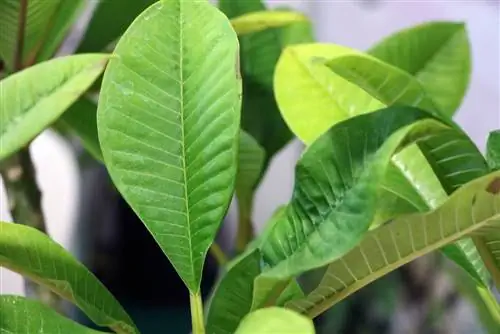
But it shouldn't be watered. The exception is evergreen species such as Plumeria obtusa, which retains most of its leaves even in winter, provided that overwintering is done appropriately. This species should only receive minimal water at longer intervals from November to early/mid-April. As soon as the new leaf shoots and, with a bit of luck, the first flowers can be seen from March/April, deciduous species can also be watered sparingly again. After another 3-4 weeks you can go back to the normal watering rhythm.
Fertilize
In addition to watering, high-quality soil and the right fertilizer are required to get the frangipani to bloom. By the way, specimens grown from seeds usually bloom for the first time after 3 - 5 years, very rarely after two years, provided the conditions are optimal.
Fertilization of young and older plants
- The most important nutrients for this plant are nitrogen, potassium and especially phosphorus
- Plants that are younger than three years are not yet capable of flowering
- In addition to phosphorus, you need an increased nitrogen content
- High phosphate content is particularly important in adult plants
- Phosphorus promotes flower formation and root growth
- Fertilize continuously during the growth phase from April/May to September
- Administer special fertilizer in the appropriate dosage once a week
- Fertilize young plants from 2 months of age every two weeks at half the concentration
Tip:
When fertilizing the frangipani, it is advisable to ensure an even supply of nutrients, as is the case in their natural habitats. Over-fertilization should be avoided at all costs, as this makes this exotic beauty lazy to bloom.
Suitable fertilizers
The special fertilizers for the temple tree offered in stores usually contain a balanced ratio of the most important nutrients. The concentration of the main nutrients nitrogen, phosphorus and potassium (N, P, K) is usually contained in these fertilizers in a ratio of 10:52:10 or 10:30:10. To fertilize, add 1 - 2 g of this fertilizer to 1 liter of irrigation water.
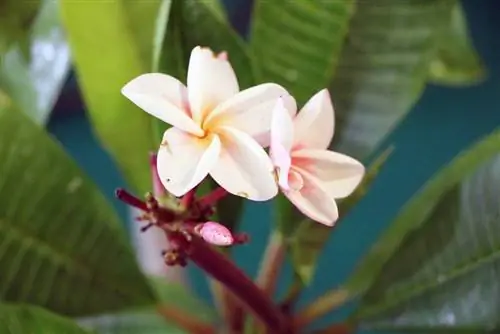
For young plants, it is recommended to add 0.5 g of such fertilizer per liter of water. Commercially available cactus fertilizers have also proven effective for young plants that are to be cultivated throughout the winter. Organic fertilizers such as cow dung are only suitable to a limited extent. At most, they can serve as basic supplies. They are usually too nitrogen-heavy.
Conclusion
The temple tree is undoubtedly one of the most beautiful exotic plants that can be cultivated in this country. They enchant with their spectacular and, depending on the variety, more or less intense floral scent that makes you want to go on vacation. It should not be watered too much or too little, as it will rot much more quickly than it will dry out. With special plumeria fertilizer, it gets all the nutrients it needs in optimal concentration. Despite everything, if there are children and pets living in the household, you should not forget that plumeria, like all dog poisonous plants, is poisonous.

